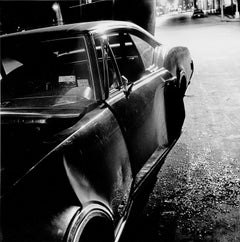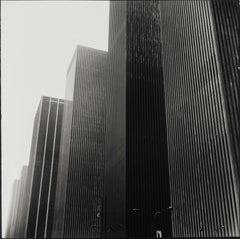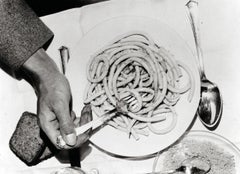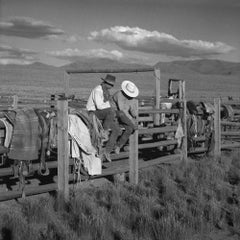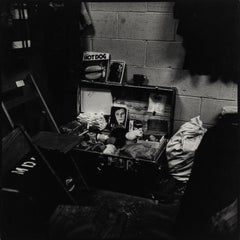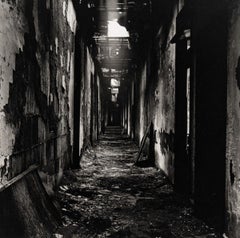Peter Hujar Photography
Peter Hujar demonstrated the same fearlessness in his photography as he did in life. He documented his bohemian lifestyle in New York City in black and white portraits that captured his outsider circle of friends and lovers. Like Robert Mapplethorpe, Nan Goldin and others, Hujar’s work emerged as a particularly crucial vehicle for increasing lesbian and gay visibility. His photography was integral to the fight for LGBTQ rights during the 1960s but he didn't earn wider societal recognition until after his passing.
Hujar was born in Trenton, New Jersey, in 1934. Due to a difficult home life, he was navigating the streets of New York City on his own by the time he was 16 years old. Pursuing photography from a young age, Hujar attended the New York High School of Art and Design in 1953. At the same time, he apprenticed in commercial photography studios. By 1964, he was working as a chief assistant for photographer Harold Krieger.
At his own considerable financial expense, Hujar left the world of commercial photography in 1967 and decided to use his talents to support the burgeoning LGBTQ rights movement. He was present at the Stonewall riots in 1969, and his iconic photo Come out! was featured in a 1970 poster for the Gay Liberation Front. Hujar also took intimate photos of counterculture figures in Manhattan throughout the 1970s, from partying drag queens to queer intellectuals. Some of his most famous images were of his friend and lover David Wojnarowicz.
In the early 1980s, Hujar stepped into a mentor role to up-and-coming artists like Gary Schneider, Nan Goldin and Kiki Smith. While he felt that his own work was underappreciated, he was happy to champion the work of the next generation.
Hujar passed away from AIDS-related pneumonia in 1987 in New York City. His work was posthumously celebrated, and his first retrospective was held in 1994 at the Stedelijk Museum Amsterdam.
Hujar's photographs have since been exhibited all over the United States and Europe. In 2020, Pace Gallery held an online exhibit called “Peter Hujar: Cruising Utopia,” which featured a selection of both his famous and lesser-known works.
Find original Peter Hujar photography on 1stDibs.
1970s Peter Hujar Photography
Silver Gelatin
1970s Contemporary Peter Hujar Photography
Silver Gelatin
1920s Modern Peter Hujar Photography
Silver Gelatin
21st Century and Contemporary Contemporary Peter Hujar Photography
Silver Gelatin
1930s Modern Peter Hujar Photography
Silver Gelatin
1970s Contemporary Peter Hujar Photography
Glass, Wood, Photographic Film, Archival Paper, Photographic Paper, Silv...
1970s Contemporary Peter Hujar Photography
Silver Gelatin
20th Century Peter Hujar Photography
Silver Gelatin
2010s Contemporary Peter Hujar Photography
Silver Gelatin
21st Century and Contemporary Contemporary Peter Hujar Photography
Photographic Film, Photographic Paper, Silver Gelatin
1960s Pop Art Peter Hujar Photography
Silver Gelatin
21st Century and Contemporary Contemporary Peter Hujar Photography
Photographic Film, Photographic Paper, Silver Gelatin
1920s Art Deco Peter Hujar Photography
Silver Gelatin
20th Century Contemporary Peter Hujar Photography
Silver Gelatin
1970s Contemporary Peter Hujar Photography
Silver Gelatin
1980s Contemporary Peter Hujar Photography
Silver Gelatin
1980s Peter Hujar Photography
Silver Gelatin
1970s Contemporary Peter Hujar Photography
Silver Gelatin
1980s Contemporary Peter Hujar Photography
Silver Gelatin
